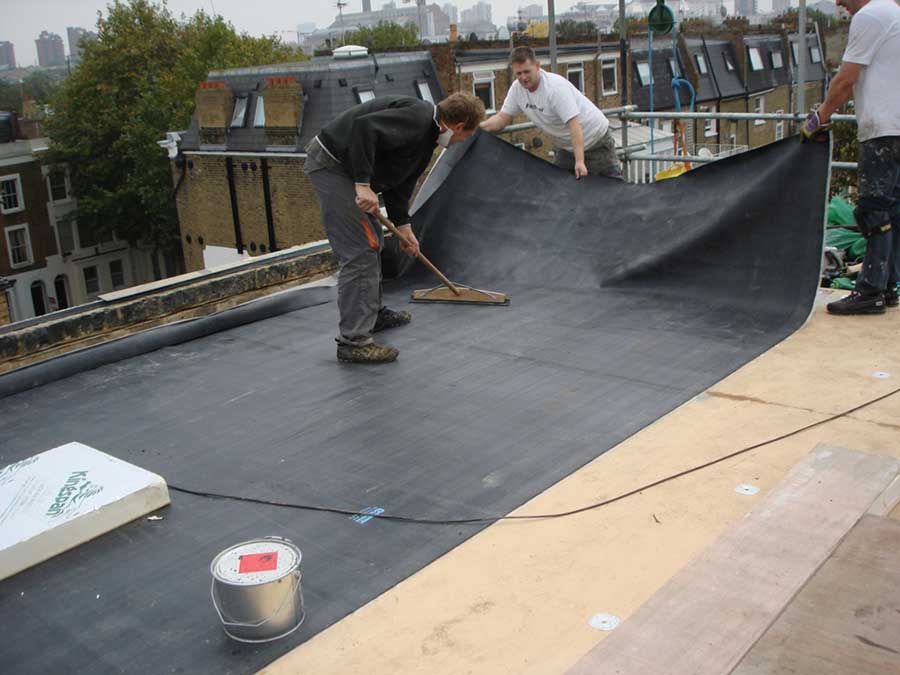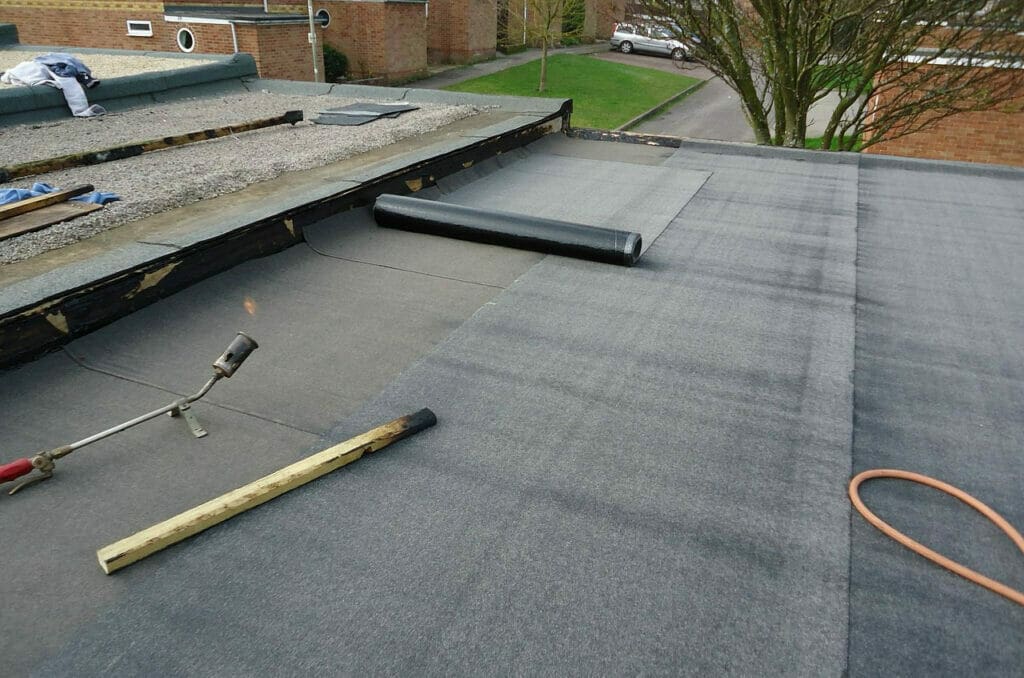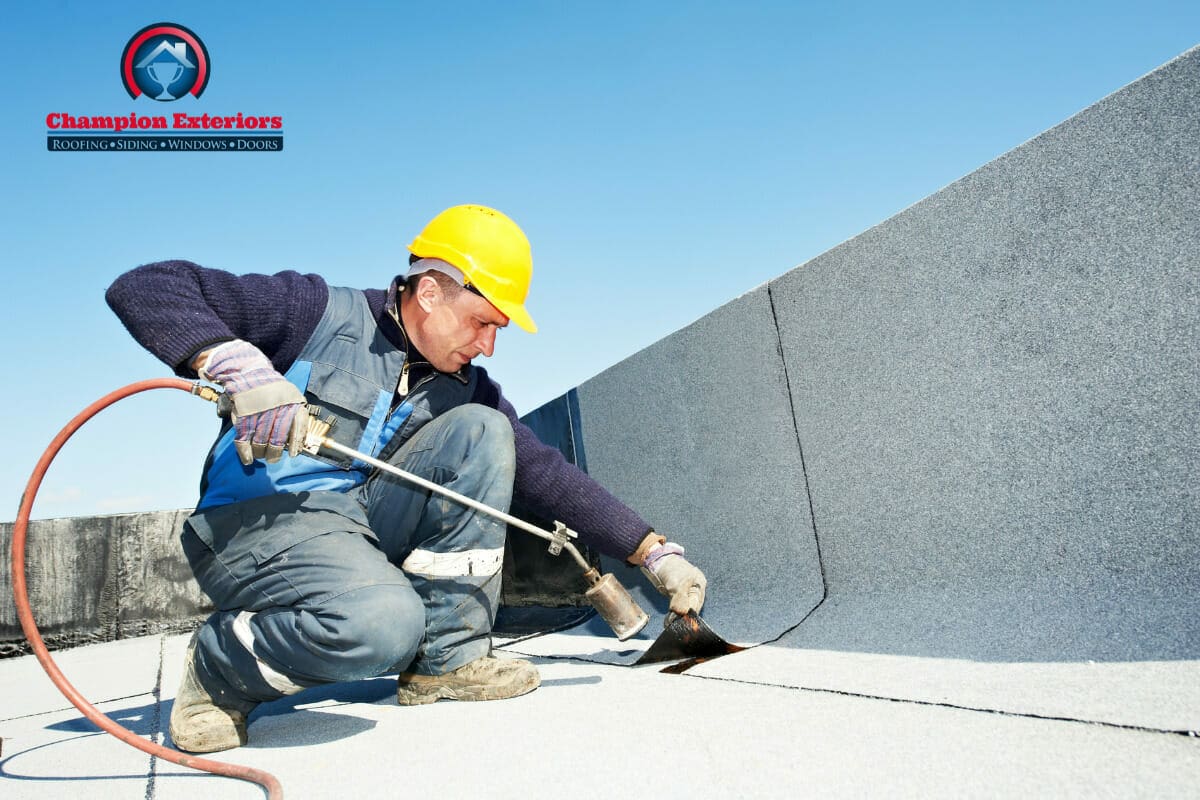Are you tired of leaky flat roofs and want to replace them? Even though flat roofs are the preferred choice for commercial buildings for their low-cost and easy installation, they come with severe problems that can be a threat to your building.
From poor installation to inadequate maintenance and their naturally short lifespan, the reasons for their failure are numerous. We will guide you through this blog post to help you understand why flat roofs fail and how you can replace them. Understanding all the reasons for flat roof failure allows you to enjoy a leak-free and durable roof for years to come.
Types Of Flat Roofs
Flat roofs are a good investment for commercial and industrial buildings. They also suit many residential building codes, but due to frequent snow and rainfall in certain parts of the United States, homeowners prefer sloped roofs over them.
Depending on the materials they’re built out of, flat roofs serve different purposes at the same time. Below we’ve included some of the different types of flat roofs you will find on commercial buildings.
EPDM Roofs
EPDM (Ethylene Propylene Diene Monomer) is one of the most popular types of roofing material that is installed on flat roofs. With flexibility and durability, EPDM is a better option than the other materials on this list for homeowners with flat or low-pitched roofs. Despite the limited color options EPDM provides, it is easy to install and work with.
In addition, roofers are able to install EPDM roofs in less time compared to other similar roofing materials. Also, due to their flexible and elastic nature, they can be cut to any shape and size depending on a roof’s complexities.
Additionally, the elastic nature of EPDM allows it to expand and contract in response to thermal expansion and contraction of the roof. Besides providing all these benefits to homeowners, EPDM also has some drawbacks that can lead to flat roof failure.

Built-Up Roofs
Built-up roofs, also abbreviated as BUR, are frequently used on commercial and industrial buildings. Providing strong protection against the weather and UV radiation with multiple layers of ply sheets and asphalt, built-up roofs make the roofing system durable and long-lasting.
Additionally, built-up roofs come with time-tested technology. That means if the top layer of the roofing system is damaged due to heavy foot traffic, or a build-up of ice, the remaining layers next to it protect the building from water infiltration.
However, like all other similar roofing types, built-up roofs are not free from flaws. There are many problems they can create for the roof deck and the other roofing components. This then results in flat roof failure.
Read our post on how much a commercial roof costs, to learn about the cost of different roofing materials, including built-up roofing.

Modified Bitumen Roofs
In commercial and residential roofing, modified bitumen is a popular roofing material for a long-lasting and durable roof. Obtained from petroleum, bitumen is a black sticky substance that is mixed with polymers to make it a stronger option for flat roofs. Additionally, roofers install it as a single-ply membrane, with adhesive or mechanical fasteners, to the roof’s structure.
Since modified bitumen is installed on a flat roof deck, it also falls prey to all the problems flat roofs have. To achieve the desired result out of a modified bitumen roof, you need to keep it clean and maintain it in a timely manner.

Common Problems With Flat Roofs
Apart from the geographic and climate factors that cut short the lifespan of a roof, flat roofs are just more vulnerable to roofing problems than their pitched counterparts, which leads them to early failure. Below is the list of problems that a flat roof may have.
1. Pooled Water
Unlike sloped roofs, low-pitched or flat roofs do not provide an adequate slope that lets water run down freely, instead, water stands on a flat roof for a long time without adequate drainage. In addition, in snowy regions of the country, flat roofs are a big concern for snow compilation. Like water, the snow has nowhere to run down when it melts, so pools on the flat roof slowly degrade the roofing materials. The roofing material may even tear or buckle, allowing moisture to settle into the layers of the roofing membrane and seep into the roof deck. Additionally, the added weight of snow on a flat roof can cause the roof to cave in if it’s not strong enough to hold the weight.
Keep in mind that melted snow on flat roof results in pooled water that will only evaporate due to excessive heat. This repetitive cycle of melting snow and pooling water, along with rapid evaporation shortens the lifespan of flat roofs.
2. Alligatoring
You might have seen flat roofs that resemble alligator skin. Alligatoring is a type of surface cracking that results due to aging, improper installation, heavy foot traffic, and the direct exposure of flat roofs to the sun.
Flat roofs, in contrast to sloped ones, have a surface area that is directly faced with heat and UV radiation coming from the sun, leading to their alligatoring. Excessive heat and sun on the roofing membrane cause it to dry out and crack. Additionally, improper installation methods, such as the overlapping of layers and unsealed flashing, lead to alligatoring along a flat roof’s surface.
3. Buckling
Flat roof buckling is one of the leading factors for flat roof failure. The excessive weight caused by overloading materials onto the roof, and snow, cause flat roof membranes to warp and stretch, leading to the roofing material buckling.
Additionally, the improper installation of flat roofs by unskilled roofers is one of the main reasons they buckle and become damaged. When a flat roof is installed improperly, the likelihood of moisture getting behind the roofing layer increases. Additionally, the heavy weight of the roofing material and the process of thermal expansion and contraction on the roof lead to the roof’s buckling over time. When buckling has reached a certain extreme, it is a sign that you need your roof replaced.
4. Leaks And Moisture
Buckling, irregular maintenance, poor installation, and pooled water are all contributing factors to water leaking and moisture formation on flat roofs. If a leak occurs it will cause the flat roof to become damaged and shorten its lifespan.
Additionally, water penetration through the roofing materials allows microbes, such as mold and mildew, to grow. If the moisture behind the roofing layers is combined with high humidity levels in the air, the roofing membrane will also be more prone to buckling
6. Flashing
Flashing is a component of a roofing system that helps to prevent water from seeping into the building. It is either made of rubber or metal like steel and aluminum. Due to regular contact with water, flashing materials fail and deteriorate over time, allowing water to seep into the roof deck. This leaking water weakens the roof structure and causes it to become damaged.
7. Short Lifespan
Aside from the factors that cut short the roof’s lifespan, flat roofs already come with a shorter expected lifespan compared to sloped roofs. On average, the lifespan of a flat roof ranges between 25-30 years, while a sloped roof has a greater lifespan of about 50 years or more. Despite the fact that flat roofs are the best roofing style for commercial and industrial buildings, they need timely replacement.
Proper Flat Roof Replacement
If you have an old and leaky roof installed on your building, you must try to have it replaced by skilled and professional roofers.
Below we’ve included some of the steps your professional roofing contractor will take so that you can have a better understanding of the flat roofing process.
Preparation
The first step in properly replacing a flat roof is to remove any existing roofing material and assess the condition of the roof deck, framing, and any underlying insulation. This step is important to ensure that any damage or defects are identified and addressed before proceeding with the replacement process.
Repairs
Once the condition of the roof has been assessed, it’s necessary to make any necessary repairs to the roof deck, framing, or insulation. This will ensure a stable and secure base for the new roofing system.
Waterproofing
The next step is to install a new waterproofing membrane over the entire roof deck, making sure to overlap the edges and properly secure it to prevent water infiltration. The waterproofing membrane acts as the first line of defense against water damage, so proper installation is crucial.
Insulation
If necessary, new insulation should be installed over the waterproofing membrane. The insulation should be of a thickness appropriate for the climate and building code requirements to provide energy efficiency and temperature control for the building.
Drainage
Proper drainage is essential for the longevity and effectiveness of the roof. A new roof should have a proper drainage system, including a small slope that leads towards drains, scuppers, or gutters, to ensure that water is efficiently removed from the roof’s surface.
Flashing
Flashing is a critical component that prevents water from entering the building. New flashing should be installed around penetrations, such as vents and skylights, to ensure a complete water-tight system.
Final Inspection
The final step is to inspect the roof to ensure that all components have been installed correctly and that there are no defects. A thorough inspection will ensure the longevity and effectiveness of the new roof.
Replace Your Leaky Roof Today With Professional Assistance
Now that you’ve gotten a better understanding of flat roofing systems and the common problems that occur with them, you can take the proper steps to maintain your flat roof and prevent frequent repairs or replacements from occurring.
If you are looking for a commercial roof repair or replacement, make sure that you have professional help by calling the team at Champion Exteriors. If you live in New Jersey, give us a call today at (609)-845-3576.


